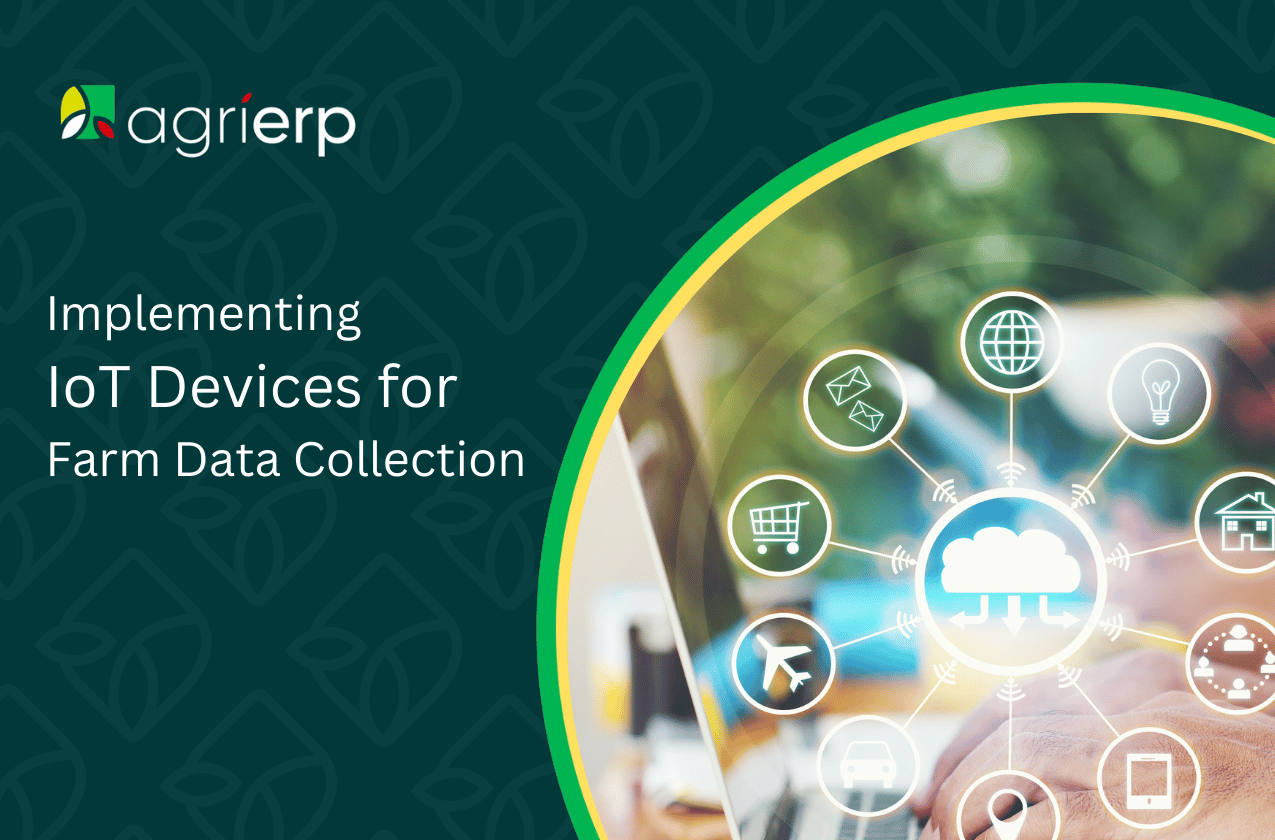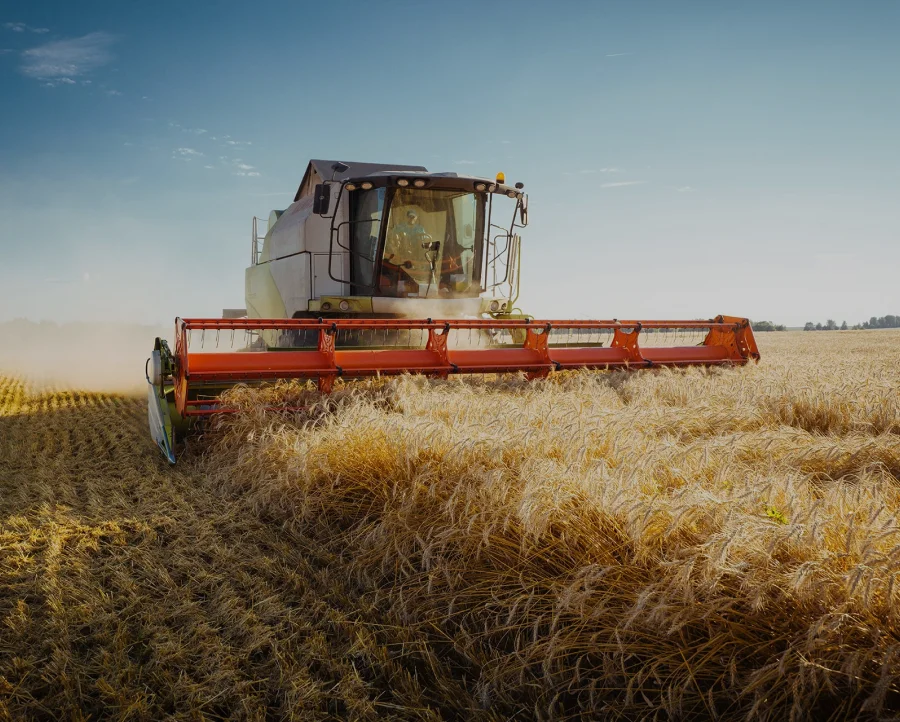Introduction
Overview of IoT in Agriculture
The Internet of Things (IoT) is a network of objects embedded with sensors and software with the aim of connecting and sharing data with other devices and systems over the Internet.
Through the integration of modern technology, IoT in agriculture is transforming traditional farming and enhancing sustainability, efficiency, and production.
By using the power of the Internet of Things, farmers may update their traditional methods and ensure accurate, data-driven management of farm operations.
Significance of Data Collection in Farming
Accurate data collection is of immense importance in farming as it provides valuable knowledge that can enhance the efficiency of various agricultural processes. Precise and real-time data empowers farmers to make intelligent decisions, improving crop yield, resource management, and overall farm productivity. With the help of IoT devices, the data that is captured is not only precise but also timely. Thus helping farmers handle issues promptly, efficiently, and proactively.
Introduction to IoT Devices for Farm Data Collection
Simple sensors to advanced machinery are just some of the IoT devices used in agriculture, all of which are meant to gather important information from the farm area. These tools facilitate monitoring animal behavior, crop health, weather patterns, and soil conditions. Using IoT devices in farms is crucial to using data to create more intelligent agricultural operations.
Types of IoT Devices Used in Agriculture
Let us look at the major types of IoT devices used in the Agricultural Sector.
Environmental Sensors
Environmental sensors monitor physical quantities such as temperature, humidity, and soil moisture. They are fundamental in monitoring farm conditions and keeping an eye on all the environmental factors that might impact yield. Weather stations containing these sensors provide detailed data on the local climate, helping farmers plan their activities accordingly.
Crop and Soil Monitoring Sensors
Soil pH and nutrient, crop health, and growth monitoring sensors may provide detailed information on soil composition and plant health. These sensors help farmers control soil fertility and identify plant illnesses early to ensure healthy crop development.
Livestock Monitoring Devices
For monitoring livestock, wearable devices such as RFID tags and GPS collars track the health and behavior of farm animals. These devices record vital signs, movement patterns, and other health indicators, allowing farmers to ensure and maintain their animals’ health.
Automated Equipment
The automated equipment category includes smart irrigation systems and autonomous tractors. Smart irrigation systems use real-time data to optimize water usage, while autonomous tractors enhance field operations through precision and efficiency.
Drones and UAVs
Drones fixed with cameras and sensors are used for aerial farm monitoring and data collection. They provide high-resolution images and multispectral data. This highly precise data aids in crop health assessment, field mapping, and detection of pest infestations.
How IoT Devices Collect and Transmit Data
Let’s dig deeper and enrich ourselves with the details of how these IoT Devices capture and send data to the receiving end.
Data Collection Mechanisms
IoT devices capture data through different sensors embedded in the equipment. These sensors collect data continuously and provide real-time information regarding various parameters of the farm environment. The collected data is logged and further processed for in-depth analysis.
Data Transmission and Connectivity
Continuing its journey, the collected data is transmitted wirelessly using technologies like Wi-Fi, Bluetooth, LoRa, and NB-IoT. Gateways and edge devices play the leading role in transferring this data to centralized platforms for further analysis and storage.
Data Integration and Management
The enormous amount of data that is gathered is managed via cloud storage platforms and centralized data platforms. Integrating the data with farm management software guarantees it is available and helpful in making decisions. These platforms provide tools for data reporting, visualization, and analysis.
Benefits of IoT Devices in Farm Data Collection
There are immense advantages to implementing IoT in agriculture, so let’s look at a few of them.
Enhanced Accuracy and Precision
IoT devices reduce the possibility of human error in data collection. Thus providing high-resolution and detailed data. This precision enables better monitoring and management of all farm operations.
Real-Time Monitoring and Alerts
Real-time monitoring enables farmers to immediately detect issues such as equipment failures or bad weather conditions. Automatic notifications and alerts help in timely interventions, minimizing the possibility of damage or loss.
Increased Efficiency
IoT devices improve the use of resources like water, fertilizer, and pesticides by optimizing data collection procedures. This efficiency results in reduced impact on the environment and sustainable farming techniques.
Improved Decision-Making
IoT devices provide statistics that improve decision-making. Better planning by farmers results in higher crop yields and increased farm production thanks to predictive analytics and forecasting technologies.
Cost Savings and Profitability
Adopting and Implementing IoT devices can reduce operational costs by efficient resource usage and minimizing waste. Increased profitability for farmers is a direct result of improved production and efficiency.
Challenges in Implementing IoT Devices on Farms
Along with its numerous benefits, there are specific challenges faced while implementing IoT Devices on farms.
Technical Challenges
Connectivity and network coverage issues can hurdle the effectiveness of IoT devices. This is a major concern in rural areas with meager internet coverage. Ensuring compatibility between different devices and platforms is also a huge challenge.
Economic Barriers
The initial investment and maintenance costs of IoT devices can be high. This is a hurdle for small-scale farms. Conducting a cost-benefit analysis is important to determine the viability of these investments.
Data Privacy and Security Concerns
Safeguarding important farm data against online attacks is critical. Addressing concerns about data ownership and privacy is also crucial for gaining farmers’ confidence and guaranteeing the secure use of IoT technologies.
Knowledge and Skills Gap
Training farmers and staff to use IoT devices easily and effectively is the key to successful implementation. Continuous support and technical assistance are also important to bridge the skills gap.
Future Trends and Developments
The IoT Technology is advancing at a rapid pace. These are some of the future developments in sight.
Advancements in IoT Technology
IoT in agriculture is still developing, and new technologies have the potential to completely transform the agricultural industry. Future developments will probably be focused on increasing sensor abilities, improving energy efficiency, and broadening the range of communication choices.
For example, low-power wide-area networks (LPWAN) may give more dependable connections in rural places. At the same time, next-generation sensors may offer even more precision in detecting crop health and soil nutrients. Furthermore, energy-saving and battery technology improvements may prolong the operating life of Internet of Things devices, lowering expenses and maintenance needs.
Integration with Other Technologies
Integrating IoT with artificial intelligence (AI), big data analytics, and blockchain technology holds immense growth potential for agriculture. AI can process the data IoT devices collect, offering predictive insights and automated decision-making. Big data analytics can spot patterns and trends that help make farming practices efficient. Blockchain technology enables transparency and traceability in the food supply chain, ensuring that data is secure and tamper-free. Farming methods that are more intelligent, effective, and sustainable may result from these interconnected technologies.
Market Trends and Adoption
The use of IoT in agriculture is expected to increase greatly in the upcoming years. The need for sustainable agricultural methods, the rise in global food consumption, and technical developments that lower the cost and increase the accessibility of IoT solutions are the main factors behind this development. Governments and agricultural organizations also play a critical role in offering support and rewards for using smart farming technology. IoT in agriculture will grow as these trends continue, assisting farmers worldwide in increasing sustainability and production.
Conclusion
Implementing IoT devices for farm data collection has numerous benefits, including enhanced accuracy, real-time monitoring, increased efficiency, improved decision-making, and cost savings. These technologies empower farmers to collect highly precise and timely data, maximize resource usage, and respond quickly to problems.
However, there are certain challenges that must be addressed, such as technical issues related to connectivity and compatibility, economic barriers due to high initial investement, data privacy and security concerns, and the need for proper training and support for farmers.
The agricultural industry is expected to experience a huge transformation due to the ongoing progress in IoT and its integration with other technologies. By integrating IoT, farming may become more profitable, sustainable, and productive.
It is essential that these technologies continue to be developed and employed for agriculture to remain modern, food security to be guaranteed, and resource scarcity and climate change issues to be addressed.
We must continue to encourage innovation, provide farmers with training and assistance, and remove obstacles in the adoption of IoT Devices for data collection. If we do so, we will be able to fully utilize IoT in agriculture and build a more intelligent and sustainable agricultural future.
In conclusion, the integration of IoT in agriculture is not just a technological advancement but a necessary development for the farming industry. As you consider implementing IoT devices for farm data collection, remember that the benefits far outweigh the challenges. With the right approach and support, you can transform your farm operations, making them more efficient, productive, and sustainable. Stay updated about the latest trends and developments, and don’t hesitate to invest in IoT technologies that will secure the future of your farm and guarantee profitability!








